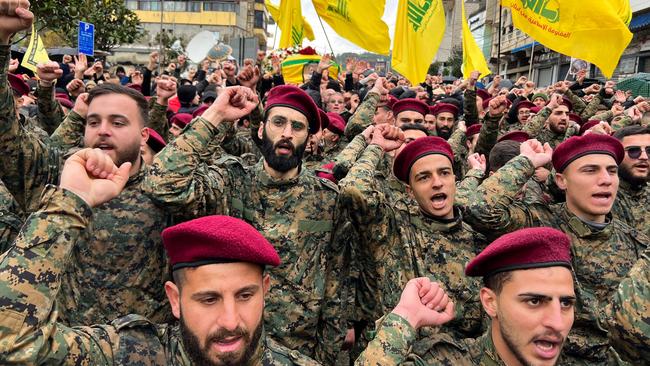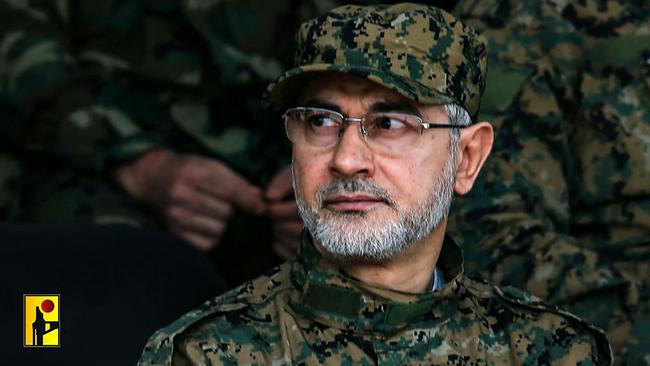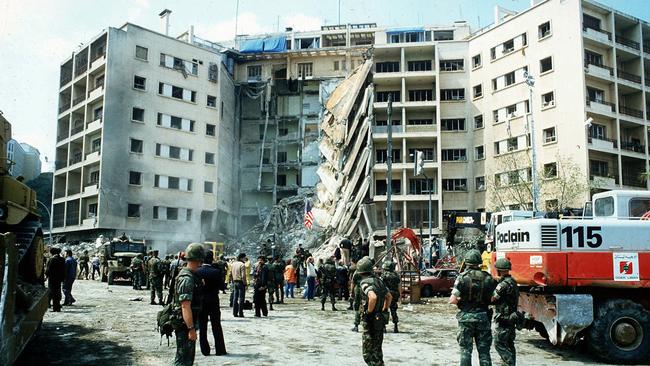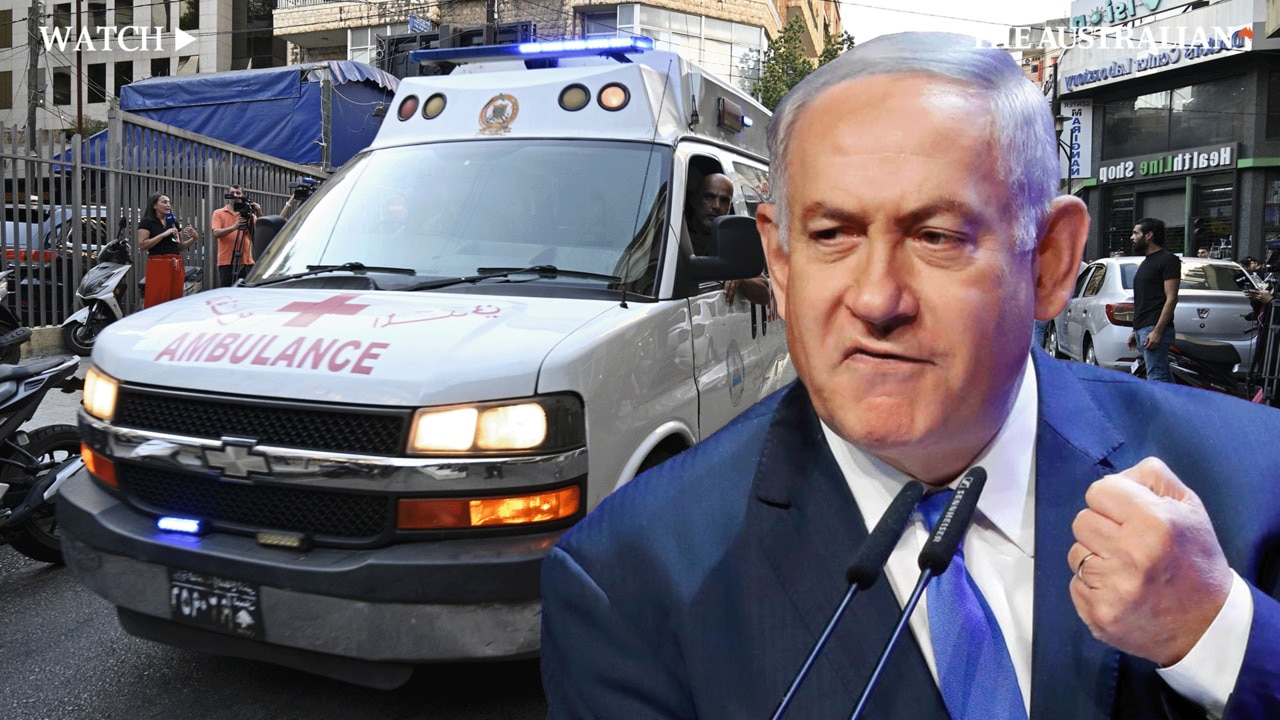Lebanon: A history of Hezbollah — from Iranian puppet to regional powerhouse
Founded in 1982, the Lebanese paramilitary group now claims to have 100,000 fighters – and has formed an uneasy partnership with Hamas against its old foe Israel.

A senior Hezbollah figure was walking along a quiet Damascus street one February evening after dinner in 2008 when a bomb planted in a spare tyre on the back of an SUV exploded.
Imad Mughniyeh, Hezbollah’s international operations chief, was killed in the burst of shrapnel. It emerged that the CIA had built the bomb. Mossad, the Israeli foreign intelligence agency, triggered it remotely from Tel Aviv.
Mughniyah was on the “hit list” for his role in a bombing on the American embassy in Beirut, in 1983.
Now another culprit has been crossed off the list of America’s “most wanted": Ibrahim Aqil, a top Hezbollah commander was killed in an Israeli strike on a building in the heart of Beirut on Friday. A dollars 7 million bounty was on his head for his role in the embassy bombing as well as a suicide attack on a barracks that year in which more than 300 people died, including 241 US military personnel.

If the horrors of the 1980s have returned to haunt the conflict in the Middle East it is because those violent years were the crucible from which Hezbollah emerged. Islamic Jihad, which claimed responsibility for the attacks, is now considered an early alias for what has become the Arab world’s most significant paramilitary force.
The killing of Aqil followed another and provocative bit of Israeli sabotage that turned electronic pagers and walkie-talkies into bombs that blew up in the hands of Hezbollah’s network of operatives, killing several dozen and injuring thousands.
That extraordinary assault has illuminated not only the dark mastery of Mossad, the Israeli intelligence group assumed to have doctored the electronic devices. It also has thrown a spotlight on one of its inveterate enemies. But what is Hezbollah – and is it about to become involved in a full-scale war with Israel?
Forged in war and revolution
The group was founded in 1982, at the height of civil war in Lebanon, by followers of Ayatollah Khomeini, the Iranian revolutionary leader, who wanted to end Israel’s occupation of southern Lebanon, which Hezbollah eventually achieved in 2000 after waging a long guerrilla war.
Hezbollah proclaimed in its 1985 manifesto that the destruction of Israel was a key goal and it appears to have remained faithful since then to that aim: it fought another war against Israel in 2006 that lasted a month and ended in a draw – but not before Israeli bombardment had wreaked widespread destruction in southern Lebanon.

Israel’s goal then was the same as today: to eliminate Hezbollah. Yet the group seems to have emerged stronger from every battle. Having entered politics in the 1990s, it now holds considerable political sway over Lebanon and the country’s historically marginalised Shia communities.
Not only that. Hezbollah has grown from Iranian puppet to regional powerhouse, helping to prop up the Syrian president, Bashar al-Assad, with its paramilitary in the fight against Isis while training Houthi rebels in Yemen and militias in Iraq.
Uneasy partner of Hamas
In the alphabet soup of Middle Eastern Islamist militant groups and militias, there might seem little to distinguish Hezbollah from Hamas, both dismissed by Israel as Iranian proxies.
But while Hamas, under assault by Israel in Gaza, is a Sunni Palestinian organisation, Hezbollah is Shia Lebanese. The two support opposite sides in the Syrian civil war, with Hezbollah backing the government. The only thing uniting them is opposition to the existence of Israel – and in that cause they are working together.
When Israel invaded Gaza last year after Hamas slaughtered 1,200 Israelis and took hundreds hostage, Hezbollah showed its sympathy for the Palestinians by launching rocket attacks on Israel that have prompted the evacuation of more than 70,000 people from their homes in the north of the country.
Israel, said by the Gaza ministry of health, which is run by Hamas, to have killed more than 40,000 people in its assault on Gaza, has struck back against Hezbollah: about 100,000 residents of southern Lebanon have been evacuated because of almost daily Israeli air strikes.
Israel is now contemplating a more wide-ranging military operation against Hezbollah so that its citizens can return to their homes.
Some experts say Hezbollah may yet hesitate to enter a wider war for fear of losing the gains it has made inside Lebanon.
Danger zones

Others argue Hassan Nasrallah, 64, the cleric who leads Hezbollah, may have no choice. He took the leadership in 1992 after the previous “secretary-general” was killed in an Israeli air strike. Not surprisingly, perhaps, he never appears in public, delivering his speeches from a secret location. But he is one of the most powerful political figures in Lebanon.
Nasrallah, described by the Council on Foreign Relations as “charismatic, highly intelligent and deeply religious”, he is adored by many for presiding over Israel’s withdrawal from the south and leading the 2006 war. His smiling visage is depicted on billboards and fridge magnets across the Arab world. But he also faces resistance among Lebanese who accuse him of tying their country’s fate to Iran.
A formidable fighting force

He has promised “harsh punishment” for last week’s attack on his group’s communications devices, without specifying what that might entail.
The Israeli operation was a humiliating defeat for Hezbollah. But it does not lack the resources it needs to recover. Continuing to receive funds, military training and weaponry from Iran, Hezbollah’s military strength has increased to the extent that its paramilitary wing reportedly has become more powerful than Lebanon’s army. Nasrallah claimed in 2021 that the group had 100,000 fighters – other estimates range from 40,000 to 70,000.
The group also has an impressive array of rocketry as well as armoured vehicles, tanks and an SA-6 air defence missile system all on display at the Museum of Jihad in the hills above the city of Baalbek in north Lebanon.Yet although Hezbollah, which means “Party of God” in Arabic, employs conventional military tactics and weaponry, it is credited with being one of the first militia groups to engage in suicide bombings and hostage-taking. It has also been accused of drug trafficking in Latin America.
The group was blamed, too, for kidnapping of westerners in Lebanon, including John McCarthy, a British journalist, who was held for five years, and Terry Waite, the Church of England envoy who travelled to Beirut in an attempt to secure his release and was himself held prisoner for four years.

Hezbollah’s military wing is branded a terrorist organisation by many countries but with the exception of Russia and China. America has long held the group responsible for orchestrating the devastating 1983 bombings as well as the hijacking of TWA flight 847 in 1985 and bombings against Jewish targets in Argentina.
The CIA used to refer to Mughniyah, the Hezbollah commander blown up in Damascus in 2008, as the “ghost” because of the difficulties they faced in tracking him down. His image is emblazoned on a poster in the Jihad museum at Baalbek. The blurb about him on the wall avoids any mention of bombings.
The Times




To join the conversation, please log in. Don't have an account? Register
Join the conversation, you are commenting as Logout